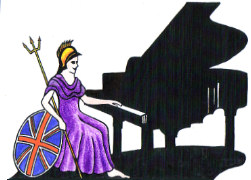Teachers, Accompanists and Piano Entertainers in the UK

UK Piano Page

Unit 60 The Triangle
Wolverton Park
Milton Keynes, Buckinghamshire MK125FJ
England
We are a family run music shop in Wolverton,
121-125 Royal Avenue
Belfast, County Antrim BT1 1FF
Northern Ireland
The Belfast music scene has been quietly turning
65 Sankey Street
Warrington, Cheshire WA1 1SU
England
Today, we supply all styles of Acoustic Piano,
40 Willsgrove
Cahercalla
Ennis, County Clare
Republic of Ireland
Pianos for Sale
126 Deansgate
Manchester, Greater Manchester M3 2GR
England
Forsyth Brothers Limited offers an unrivalled
Music Festival for performers and guests Our 10th
18-06-2022 01:30PM
The Morecambe Bay Piano Group was set up to extend
11-12-2021 02:00PM
The Morecambe Bay Piano Group was set up to extend
08-01-2022 02:00PM
The Morecambe Bay Piano Group was set up to extend
12-02-2022 02:00PM
How big are upright pianos
Moden Upright pianos are usually between 110cm – 135cm in height, around 155cm wide and 60cm deep, the height being the major difference between models. You also have the old Mine piano at 70cm these are no longer made.
Upright pianos are popular because of their small footprint compared to a grand piano. While grand pianos may look more attractive, tall upright pianos are capable of producing a strong tone, wide dynamic range and better control in the keys and action than a small upright, Tall Uprights are usually only a few cms deeper and wider than shorter upright piano but will give you a much richer sound a good as most than a small Grands A small modern upright will have weight of 185kg a large one can exceed 235kg